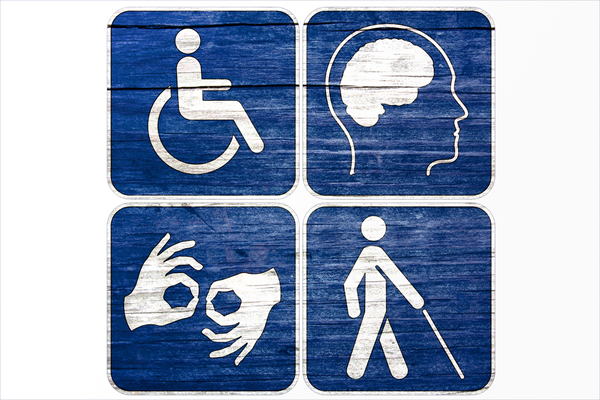ATD Blog
One in Five: Enabling Employees With Disabilities
Wed Feb 05 2014

Did you know that 56 million Americans, or roughly one in five, have some form of disability? It is estimated that 10 percent of the population has some form of “hidden” disability, such as ADHD, dyslexia, or diabetes. With the aging of the population, we can expect that such numbers will increase.
With new legislation that updates the 1990 American with Disabilities Act (ADA), many organizations are reviewing what needs to be done to be in compliance with the law, and tap into this source of talent.
Defining disability
A disability, as defined by the ADA, may be one or more physical or mental impairment that has a significant limited impact on a major life activity, such as walking, reading, bending, and communicating. The impairment may also be related to a major bodily function, such as the immune system, normal cell growth, digestive, bowel, bladder, neurological, brain, respiratory, circulatory, endocrine, and reproductive functions.
Making necessary accommodations
To take full advantage of the talents and abilities of employees with disabilities, sometimes very simple accommodations are all that is needed; many require no or limited cost. In fact, according to the Job Accommodation Network, 50 percent cost less than $50 and the great majority (88 percent) cost less than $1,000. Here are a few examples of low or no-cost adjustments:
raising desk height so that a wheelchair can fit underneath
purchasing an anti-glare computer screen for certain vision problems
installing an indicator light for a hearing impaired employee
changing an employee’s work schedule to accommodate medical appointments
providing a rear view mirror in a cubicle for a veteran with post-traumatic stress disorder.
With most accommodations requiring limited investments, why is it that people with disabilities have such high unemployment rates—less than half the rate of non-disabled colleagues?
There are several factors, including not having a robust recruiting pipeline for this population. Perhaps a larger factor, however, is the stigma associated with disabilities. In fact, many employees choose to keep their disabilities hidden, out of concern that such disclosure will result in future career limitations or that others will focus more on their disability than their talents and potential. This is well stated in the following excerpt by the U.S. Congress:
“…historically, society has tended to isolate and segregate individuals with disabilities, and, despite some improvements, such forms of discrimination against individuals with disabilities continue to be a serious and pervasive social problem...”
Actions for training professionals
This is a long-term problem that requires deliberate action to address. Here are a few corrective actions our industry can take today:
Promote an affinity group or Employee Resource Group that will welcome employees with disabilities and help to educate the organization about their needs.
Provide training to the workforce about disability awareness.
Provide evidence of active recruitment of individuals with disabilities.
Promote flexible workplace policies and practices.
Publicize success stories. When D&I is effectively leveraged (such as a business process is improved, a new product is launched, or customer messaging is targeted correctly, and so forth), ensure that such positive examples are widely-shared.
Celebrating differences
The U.S. Congress eloquently describes the cost to our society of our continuing failure to focus on creating a more inclusive workplace environment to people with disabilities:
“…the continuing existence of unfair and unnecessary discrimination and prejudice denies people with disabilities the opportunity to compete on an equal basis and to pursue those opportunities for which our free society is justifiably famous, and costs the United States billions of dollars in unnecessary expenses resulting from dependency and nonproductivity.”
As you start thinking about this issue, I recommend everyone watch the inspiring video, “Because Who is Perfect?,” developed to celebrate the International Day of Persons with Disabilities by Pro Infirmis, an organization for the disabled. You can download it at http://www.youtube.com/watch?v=E8umFV69fNg.
What best practices have you implemented to ensure that your current and potential employees with disabilities are “Out and Equal?”
To read more D&I blog posts, go to http://www.astd.org/Communities-of-Practice/Human-Capital/Best-Practices-in-Diversity-and-Inclusion.
